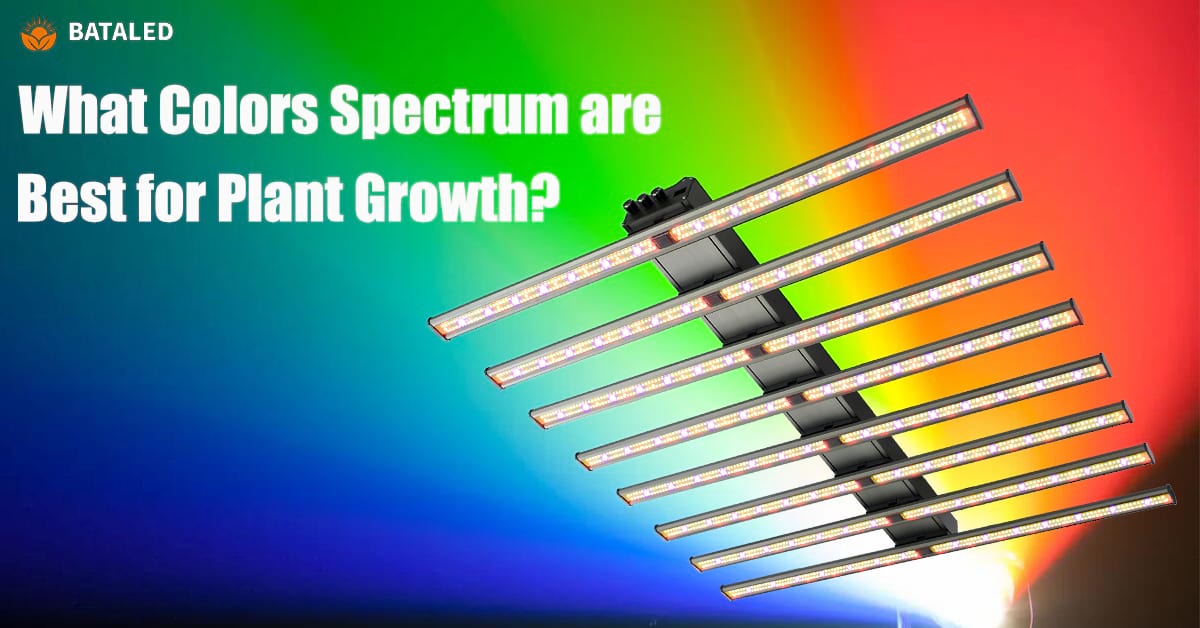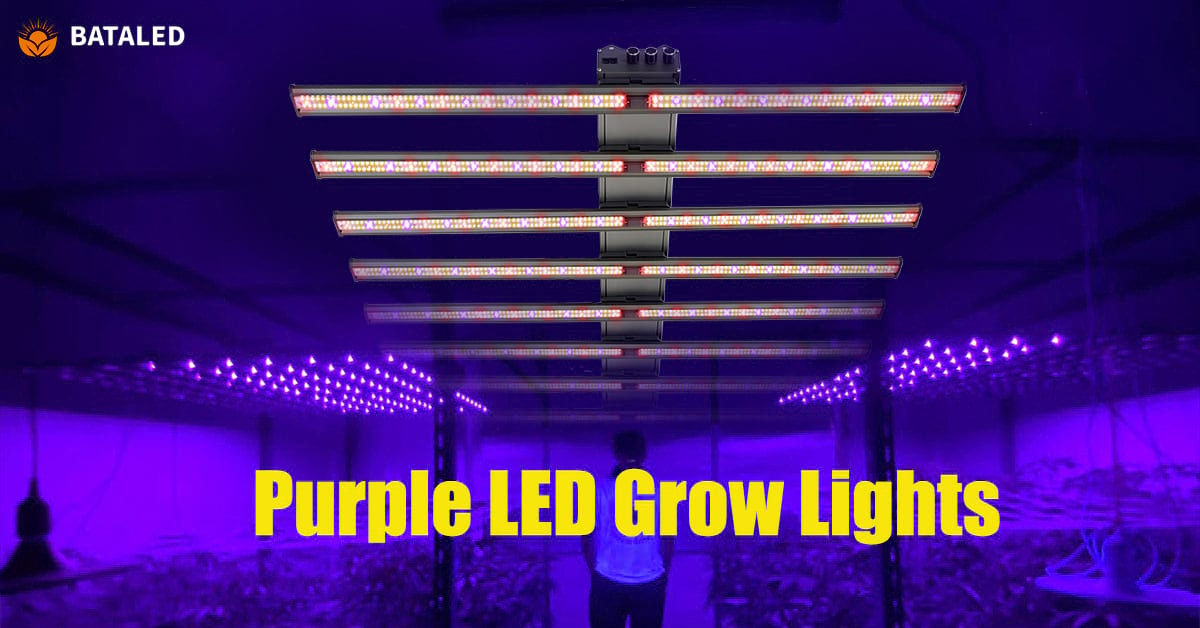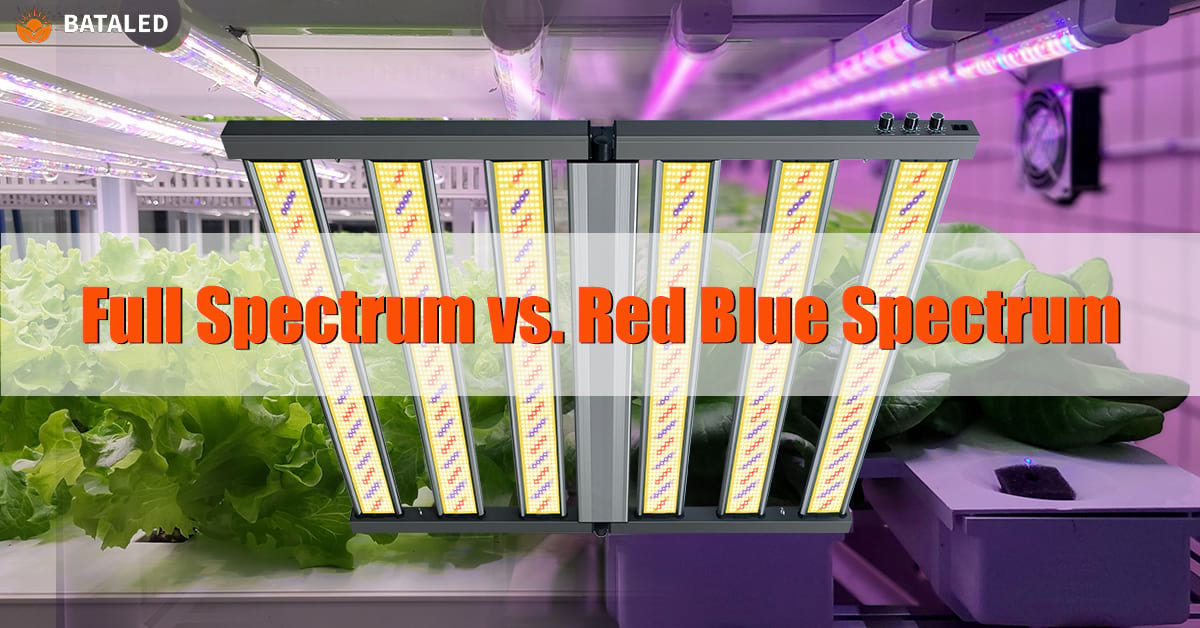Growing Perfect Lettuce Indoors: Complete LED Grow Lights Cultivation Guide from Seed to Harvest
Lettuce has become one of the most popular leafy greens for indoor cultivation, loved for its short growth cycle, delicious taste, rich vitamin content, and easy care. As a result, it appeals to both commercial growers and home gardeners. With the rising popularity of indoor farming, understanding how to grow lettuce efficiently and sustainably is essential.
In this article, I’ll share our experience using LED grow lights to optimize indoor lettuce production, along with step-by-step cultivation tips—from seedling to harvest.
Why Grow Lettuce Indoors?
Indoor lettuce farming is no longer a scene from sci-fi movies—it’s a practical solution for modern urban agriculture. Compared to traditional outdoor growing, the biggest advantage of indoor cultivation is complete control over the environment. Whether it’s freezing winter or scorching summer, you can create ideal conditions for lettuce, free from seasonal limitations.
More importantly, indoor growing avoids common outdoor pest problems, reducing pesticide use and ensuring truly organic, healthy produce. For modern individuals pursuing a high-quality lifestyle, this isn’t just a new way to grow food—it’s a sustainable way of living. Next, we’ll focus on how to use LED grow lights to create the perfect lighting environment for lettuce.
Light Requirements for Indoor Lettuce
Light is the most critical factor in indoor lettuce cultivation, just as sunlight is for outdoor crops. Without proper lighting, even the best varieties and nutrients won’t produce tender, juicy lettuce. LED technology allows growers to precisely control light spectrum, intensity, and photoperiod, mimicking—or even improving upon—natural sunlight. Understanding how lettuce’s light needs change during different growth stages is the first lesson in successful cultivation.
Spectrum Selection: Full Spectrum or Red-Blue Spectrum?
● Full Spectrum
With countless brands and types of grow lights available, choosing can be overwhelming. But here’s the truth: full-spectrum LED grow lights are the safest and most comprehensive option. They closely resemble natural sunlight, providing all the wavelengths plants need—from blue-violet to red-orange, including invisible UV and far-red light.
Full-spectrum LEDs are ideal for growers seeking natural lettuce flavor, promoting balanced growth, thicker leaves, and richer taste. Research shows that lettuce grown under full-spectrum light contains 15–20% more vitamin C than those under red-blue-only lighting.
● Red-Blue Spectrum
Red-blue combo LEDs (typically in a 5:1 ratio) are a cost-effective choice for hydroponic enthusiasts. These lights emphasize the wavelengths most crucial for photosynthesis—red (640–660nm) and blue (430–460nm)—while consuming less energy and producing minimal heat.
According to Produce Grower magazine, lettuce under red-blue light grows 10–15% faster, making it ideal for commercial growers prioritizing quick harvests. However, long-term use of only red-blue light may result in thinner leaves and milder flavor.
● Smart Adjustable Spectrum
For perfectionists, smart tunable-spectrum LED systems are the professional choice. These lights let you dynamically adjust the spectrum based on growth stages:
-
Seedling stage: More blue light for compact growth.
-
Vegetative stage: Balanced red-blue for accelerated growth.
-
Maturity stage: Increased red light to boost yield.
-
Pre-harvest: A dash of UV-A to enhance flavor compounds.
Greenhouse Mag trials show that dynamic lighting increases yields by 30% compared to fixed-spectrum setups. Though the initial investment is higher, long-term efficiency makes it worthwhile.
Light Intensity & DLI: Fine-Tuning from Seedling to Maturity
PPFD (Photosynthetic Photon Flux Density)
Light intensity is measured in μmol/m²/s. Lettuce’s needs vary greatly by stage, with a light saturation point around 600 μmol/m²/s—exceeding this wastes energy and may cause light stress.
| Growth Stage | Recommended PPFD |
|---|---|
| Seedling | 150–200 μmol/m²/s |
| Vegetative | 250–350 μmol/m²/s |
| Maturity | 400 μmol/m²/s |
DLI (Daily Light Integral)
DLI measures total daily photons received (mol/m²/day). Experts recommend 14–17 DLI for lettuce.
Calculation:
Example: 300 μmol/m²/s for 16 hours = 17.28 DLI (ideal). In winter, extend light hours to compensate for weaker intensity.
Photoperiod Management: Lettuce’s “Biological Clock”
Lettuce is a long-day plant but less sensitive to photoperiod than flowering crops. Generally, 14–16 hours of light daily is optimal, with 8–10 hours of darkness for respiration and nutrient transport.
| Growth Stage | Light Hours | Purpose |
|---|---|---|
| Seedling | 12–14 hrs | Prevents legginess |
| Vegetative | 14–16 hrs | Boosts growth |
| Pre-Harvest | 10–12 hrs | Slows metabolism, extends shelf life |
⚠️ Pro Tip: Use a timer to maintain consistency—irregular lighting stresses lettuce, triggering premature bolting.
How to Choose the Right Grow Light for Lettuce?
With countless options on the market, beginners may feel overwhelmed. The right light depends on budget, space, and yield goals. A well-chosen light saves electricity while enhancing lettuce quality and taste.
Comparing Main Grow Light Types
Before selecting, understand the four primary grow light types and their pros/cons for lettuce:
-
LED Grow Lights
-
Best for: Energy efficiency, customizable spectra.
-
Ideal spectrum: Full visible range (blue for growth, red for leaf expansion).
-
Pros: Long lifespan, low heat.
-
Cons: Higher upfront cost.
-
-
Fluorescent Grow Lights (T5/T8)
-
Best for: Small-scale, budget setups.
-
Pros: Affordable, balanced spectrum, low heat.
-
Cons: Lower efficiency, shorter lifespan.
-
-
Metal Halide (MH) Lights
-
Best for: Seedling stage (blue-heavy spectrum).
-
Pros: Good for compact growth.
-
Cons: High heat, energy use, frequent bulb replacements.
-
-
High-Pressure Sodium (HPS) Lights
-
Best for: Mixed crops (not ideal for lettuce alone).
-
Pros: High intensity.
-
Cons: Red-heavy spectrum promotes bolting; requires cooling.
-
Efficiency & Budget Breakdown
| Type | Initial Cost ($) | Yearly Electricity ($) | 5-Year Total Cost ($) | Efficiency (μmol/J) | Best For |
|---|---|---|---|---|---|
| LED | 100–500 | 36–73 | 200–600 | 2.5–3.0 | All stages |
| Fluorescent | 20–100 | 55–110 | 300–500 | 1.5–2.0 | Seedlings/small setups |
| MH | 150–400 | 164–219 | 800–1,200 | 1.8–2.2 | Early growth |
| HPS | 100–300 | 219–273 | 1,000–1,500 | 1.5–1.8 | Flowering crops |
Verdict: LEDs are the top recommendation for long-term, high-quality lettuce production.
Hands-On Lettuce Cultivation: From Seed to Harvest
With the right LED lights in place, it’s time to put theory into action. This section provides a step-by-step guide for each growth phase, including common pitfalls—perfect for beginners.
Seedling Stage – Building a Strong Foundation
1.Container & Medium Selection
-
-
Shallow trays (5–7 cm deep) work well for direct seeding, while deeper pots (10–15 cm) suit transplanting for stronger roots.
-
Recommended medium: Coconut coir + perlite (3:1 mix), pH 6.0–6.5. Pre-soak to prevent moisture loss.
-
Hydroponic DIY option: Use 4-inch PVC pipes with aeration, spaced 10–15 cm apart for seedlings.
-
2.Variety Selection & Germination Tips
-
-
Top 8 lettuce varieties for indoor growing:
-
Leaf lettuce (e.g., Romaine, Butterhead) – Great for beginners.
Head lettuce (e.g., Iceberg) – Crisp texture, needs space.
Heat-tolerant (e.g., Jericho) – Summer-friendly.
Cold-tolerant (e.g., Winter Density) – Best for fall/winter.
Hydroponic favorites (e.g., Buttercrunch) – Fast growth, pest-resistant.
Compact varieties (e.g., Mini Greens) – Space-saving, decorative.
Fast-growing (e.g., Baby Leaf) – Ready in 20 days.
Specialty types (e.g., Red Leaf, Lollo Rossa) – Vibrant and flavorful.
-
-
Germination trick: Refrigerate seeds for 24 hours before planting to break dormancy. Lightly press seeds into the medium (0.3–0.5 cm deep)—they need light to sprout!
-
3.Lighting Setup
-
-
PPFD: 100–150 μmol/m²/s for 12 hours/day.
-
Hang lights 30–40 cm above seedlings—too close causes dehydration, too far leads to legginess.
-
Extra blue light (20% more) promotes compact, sturdy seedlings.
-
H3 Title: Vegetative Stage – Accelerating Leaf Growth
1.Lighting Adjustments
-
-
Increase PPFD to 250–350 μmol/m²/s for 14–16 hours/day.
-
Red-blue ratio: 7:1 for leaf expansion, but include 2–3 hours of high-blue light daily to prevent thin leaves.
-
2.Care Tips
-
-
Temperature: Keep at 18–22°C daytime, 15–18°C nighttime (avoid >25°C to prevent bolting).
-
Watering: Check soil moisture by finger—water only when the top inch is dry. For hydroponics, maintain EC 1.2–1.8 mS/cm.
-
Pest control: Use yellow sticky traps for aphids; spray 1% soap water if needed. Prevent mildew with airflow and avoid wet leaves.
-
H3 Title: Maturity & Harvest – Perfecting Flavor & Storage
1.Final Lighting Tweaks
-
-
Reduce light to 12–14 hours/day (longer periods trigger bolting).
-
Spectrum hack: Add 10% UV-A light 48 hours before harvest to boost antioxidants (especially for red varieties).
-
2.Harvesting & Storage
-
-
First harvest: Typically 4–6 weeks after sowing.
-
Cut-and-come-again method: Harvest outer leaves, allowing the center to regrow.
-
Storage tip: Dunk leaves in ice water for 5 minutes post-harvest, then store in breathable bags at 0–5°C (avoid apples/pears—they release ethylene).
-
Advanced Techniques – Maximizing Yield & Flavor
Once you’ve mastered the basics, these pro tips take indoor lettuce to the next level:
-
Vertical farming: Stack hydroponic layers (40 cm apart) with tiered LED lighting (300→600 μmol/m²/s) for 5x higher yields.
-
Spectrum fine-tuning: Before harvest, boost far-red light (730 nm) to increase sweetness by 1–2°Brix.
-
Reflective surfaces: Line grow areas with Mylar or white panels to boost light efficiency by 30%.
Troubleshooting Common Issues
Q: Why are my lettuce leaves turning yellow?
-
Cause: Nitrogen or iron deficiency.
-
Fix: For hydroponics, check EC; for soil, apply nitrogen-rich fertilizer. Spray with 0.2% iron sulfate + 0.5% urea solution.
Q: Why is my lettuce leggy?
-
Cause: Insufficient light or too little blue spectrum.
-
Fix: Lower lights or increase blue-light exposure.
Q: Brown leaf edges?
-
Cause: Calcium deficiency or salt buildup.
-
Fix: Maintain airflow, add calcium to nutrient solution, or foliar-spray chelated calcium.
Conclusion
By mastering full-spectrum LED lighting, staged PPFD adjustments, and environmental control, you can grow lettuce indoors year-round—crisp, flavorful, and pesticide-free. Whether for home or commercial use, these techniques ensure maximum yield and quality. Now, it’s time to start planting!
CATEGORIES
Recommended Post

Where It’s Legal to Grow Cannabis: Ultimate Tips & Cultivation Laws
About Author—Jose Li
Jose, a senior content creator at BATA LED, brings over 5 years of expertise in LED grow light. He delivers valuable insights to help growers and farmers better understand LED grow light technology, empowering them to boost crop yields and quality with advanced lighting solutions.


